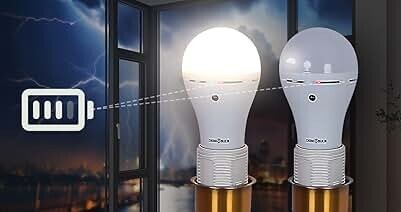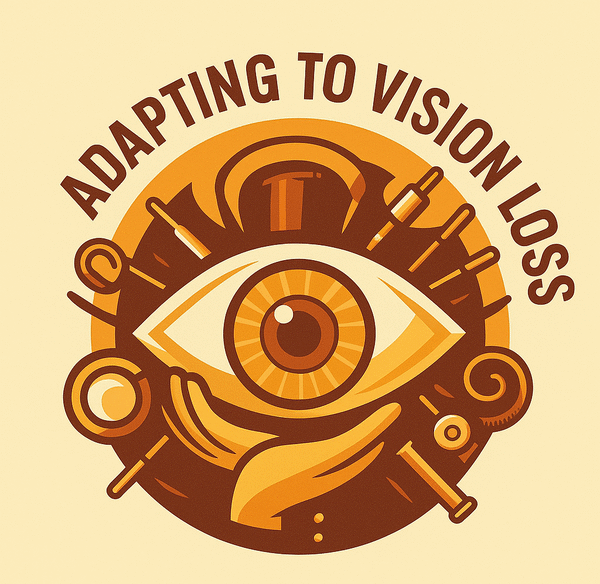 As someone who’s spent years adapting to vision loss, I’ve learned that good lighting is more than just a convenience—it’s a necessity. Proper lighting can mean the difference between struggling to perform a task and doing it with ease. That’s why I want to talk about rechargeable light bulbs, a game-changer in lighting technology. Not only are they versatile and convenient, but they also have significant benefits for individuals with visual impairments like me.
As someone who’s spent years adapting to vision loss, I’ve learned that good lighting is more than just a convenience—it’s a necessity. Proper lighting can mean the difference between struggling to perform a task and doing it with ease. That’s why I want to talk about rechargeable light bulbs, a game-changer in lighting technology. Not only are they versatile and convenient, but they also have significant benefits for individuals with visual impairments like me.
While superior lighting is a necessity in everyday life, it is even more important in the event of a power outage. During ordinary lighting I try to be vigilant about where I am stepping and what I am doing. But, when the power goes out, trying to maneuver with a flashlight is very difficult.
Rechargeable light bulbs are exactly what they sound like: bulbs with built-in batteries that can hold a charge and provide light even during power outages. They come in various types, each with its own set of pros and cons. Let me share what I’ve discovered through my research and experience.
The Types of Rechargeable Light Bulbs
1. LED Rechargeable Bulbs
LED bulbs are the most popular type of rechargeable light bulb, and for good reason.
- Pros:
-
- Energy-efficient and long-lasting.
- Provide bright, crisp light, which is particularly beneficial for visually impaired individuals who need high contrast.
- Many models offer adjustable brightness settings.
- Typically have long battery lives, with some lasting up to 8 hours on a single charge.
- Cons:
-
- Often more expensive upfront than other types.
- Not as warm or soft as incandescent bulbs, which some people prefer for ambient lighting.
For me, the brightness and efficiency outweigh the cost, especially since LEDs reduce the strain on my eyes.
2. Incandescent Rechargeable Bulbs
While less common, incandescent rechargeable bulbs are still available.
- Pros:
-
- Provide warm, natural light that feels more like sunlight.
- Often cheaper than LED options.
- Cons:
-
- Much less energy-efficient and have shorter lifespans.
- Battery life is typically shorter compared to LEDs.
I find incandescent bulbs a bit of a trade-off. While they’re cozy, they’re not as practical for long-term use, especially during power outages.
3. Smart Rechargeable Bulbs
These are rechargeable LED bulbs with added features like app control, color-changing options, and voice commands via smart home devices.
- Pros:
-
- Can be controlled remotely, making them ideal for individuals with limited mobility or additional impairments.
- Offer customizable lighting settings, including dimming and color temperature adjustments.
- Cons:
-
- Require Wi-Fi and a compatible smart home system.
- Often more expensive than basic LED models.
Smart bulbs can be incredibly useful, especially if you like the ability to control lighting without getting up. Personally, I love the convenience but find them a bit pricey.
Benefits of Rechargeable Light Bulbs for the Visually Impaired
Rechargeable light bulbs aren’t just about convenience—they can truly improve the quality of life for those of us with visual impairments. Here’s how:
- Power Outage Peace of Mind
For visually impaired individuals, navigating in the dark can be particularly challenging and unsafe. Rechargeable bulbs automatically light up during a power outage, providing consistent illumination when it’s needed most. - Task Lighting
Whether I’m reading, cooking, or sorting laundry, having reliable, portable lighting helps reduce eye strain and makes tasks more manageable. - Adjustable Brightness
Many rechargeable bulbs allow you to adjust brightness levels. This is a big plus for those of us whose vision changes depending on the time of day or the task at hand. - Portability
Some models can be removed from their sockets and used as portable lights, essentially functioning as a flashlight. This versatility is a game-changer for visually impaired individuals who may need extra lighting in different parts of their home.
Drawbacks to Consider
No product is perfect, and rechargeable light bulbs have their downsides:
- Initial Cost: High-quality rechargeable bulbs, especially LEDs and smart bulbs, can be pricey.
- Maintenance: Some models require regular recharging, which might be inconvenient for those with mobility issues.
- Battery Degradation: Over time, the batteries in these bulbs lose their ability to hold a charge, reducing their effectiveness.
Possible Alternatives When Power is Off
These are great options for easy control of your lighting in normal circumstances. However, in the event of a power outage, most of these will not work because most of them rely on wi-fi. If your Wi-Fi is unavailable, here are a few workarounds to control your smart light bulbs:
- Bulbs with Bluetooth Capability:
Some smart bulbs, such as Philips Hue Bluetooth bulbs, can be controlled via their companion app on your iPhone using Bluetooth. This bypasses the need for Alexa and Wi-Fi. - Manual Switch:
Most smart bulbs still function with a traditional wall switch. You can turn them on or off manually if connectivity is unavailable. - Smart Bulb with Local Control Hub:
If you have a hub (e.g., Philips Hue Bridge or Lutron Caséta), some hubs offer local control via their app even when the internet is down, provided the iPhone is connected to the same network.
Final Thoughts
Rechargeable light bulbs have made a significant impact on my day-to-day life. Whether it’s ensuring I have light during an emergency or providing the perfect brightness for detailed tasks, they’ve proven their worth. For those of us with visual impairments, these bulbs aren’t just a convenience—they’re a tool for independence.
If you’re considering investing in rechargeable light bulbs, think about what matters most to you—brightness, battery life, or advanced features like smart controls. With the right choice, these bulbs can truly brighten your life in more ways than one.
What are your experiences with lighting solutions? I’d love to hear your thoughts and suggestions!
